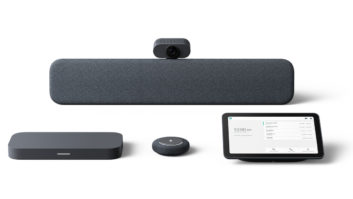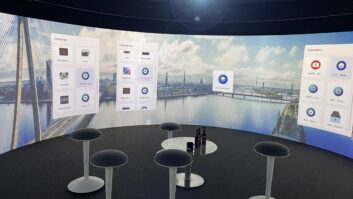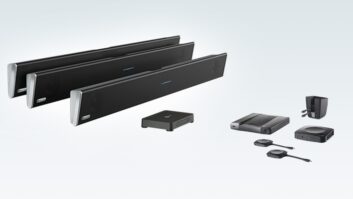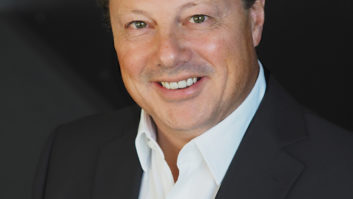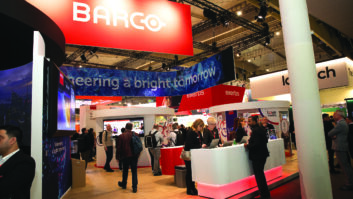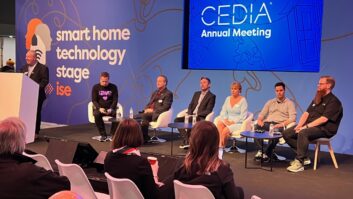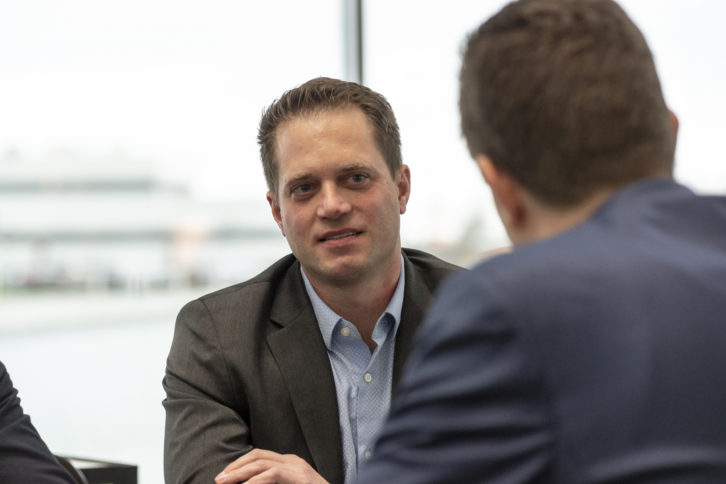
Now that the two major AV trade shows are behind us, what would you say are the biggest strengths of the ISE and InfoComm shows?
Looking back at ISE in February and InfoComm in June, for Barco both were again important events to demonstrate our current product lines and provide a preview of upcoming innovation to our partners, customers and technology enthusiasts. The intensity of both shows is quite unique in the AV space and as such year after year they present a highlight for our teams to network and reconnect with the broader AV community, gather feedback on current products and upcoming offerings and to refresh our views on trends in the overall field. For new employees at Barco, ISE and InfoComm are welcome opportunities to get up to speed quickly and obtain a snapshot of the entire AV ecosystem in just a few days.
One interesting aspect for Barco is that ISE is co-hosted by CEDIA. This additional emphasis on home theatre is welcome as Barco is exploring the positioning of our products or adaptations thereof to a broader customer base beyond the professional user, for example via the high-end residential line of projectors.
What advantages are there being a company that doesn’t just focus on one area of technology?
While Barco at its heart is a technology company, ultimately what matters is that we provide cohesive product offerings and end-to-end solutions to our customers, together with our integration partners and that we do so at the right time. The underlying deep foundational technology expertise is merely the toolset to innovate towards those products. Within our technology tool chest, we have access to a broad range of building blocks covering almost all advanced display and projection technologies as well as connectivity, collaboration and networking technologies. In addition, we have given ourselves the mandate to lead in some of the younger fields such as computational optics and photonics as well as rendering, parallel computing and machine intelligence for upcoming products. While staying up to date so broadly and deeply in the technology domain and at the same time moving fast and focused on product development requires some degree of discipline, our product managers have the advantage of being able to tap into this pool of expert engineers to create innovative solutions tailored to our customer needs.
“Sometimes new technology originates in product engineering within a business unit and is later adopted elsewhere in the company”
How do the different technology areas Barco operates in inform one another?
Barco leverages platform technology as much as possible across products and markets, but always allows for enough freedom to differentiate in each product line. The only way to effectively achieve this is when both product management and R&D work closely together at the corporate level and across business units not only to inform each other but to collaborate actively. Sometimes new technology originates in product engineering within a business unit and is later adopted elsewhere in the company and sometimes new technology is pioneered at the corporate level and showcased internally as a proof of concept in collaboration with a product group.
What current tech trends is Barco well placed to take advantage of?
Barco’s current offerings are going well beyond display and projection applications that used to make up a large part of our business. As a visualisation company active in entertainment, enterprise and medical markets, connectivity, workflows and content insights are becoming more and more important in almost all of Barco’s product offerings. Also, while not necessarily a new technology, there is today an expectation from customers that technology is easy to setup and use. Putting the right degree of care into designing clean and simple user interfaces that are cohesive across products takes effort in development but pays off in the long run. In the professional space this simplicity must be mated with enough room for customisation for the application.
“Connectivity, workflows and content insights are becoming more and more important in almost all of Barco’s product offerings”
Due to the expansion of AV in recent years, are you seeing strong growth in surprising market verticals?
Barco has retained a strong position in its core markets but has also had the courage to divest businesses that did not continue to fit that focus to make room for new opportunities. Our collaboration products are one example where Barco was able to grow in a new market vertical and where the rate of growth of the new business was encouraging. Having seen some of the new innovations in the labs I am confident it is the right decision to allow this relatively new business to expand and innovate fast in the space.
How do you see the balance between the IT department and the AV integrator? Will there be growing levels of competition in the future or greater collaboration?
Both and it probably depends quite a bit on the customer organisation. On collaboration and meeting room tools for example the purchasing decision can involve management whose primary focus might be less on technology and more on the overall meeting efficiency gains that can be achieved by installing new collaboration solutions. Since meeting room hardware such as displays, projectors, microphones, speakers, cameras and whiteboards are all connected today via the company networks and affects the bandwidth and resources IT will always be involved. To identify the best solution will usually require guidance from the AV integrator. At Barco we strive to make this integration across devices as easy and flexible as possible.
How important has the company’s new HQ building been to its continued development?
Barco at its core is an international company with offices in more than 90 countries. This is also true for R&D where we have development sites across the globe. While some of the sites have certain core competencies, many if not all products are developed in teams distributed over multiple sites and time zones. The new headquarters building in Belgium brought under one roof many employees from different sites in the region, which has been positive. As production, R&D and other functions share one new space it feels as if the interaction between the groups has also increased. Aside from that, Barco’s headquarters is a very functional building in which it is easy to get together and get things done and, in my opinion, aesthetically quite pleasing architecture. When I visit from Vancouver, Canada about every 4-6 weeks or so, it always feels a little bit like a Silicon Valley headquarters. Just that it’s in Flanders, Belgium.
Like many companies, does Barco see the future of AV sales in complete solutions rather than standalone products?
Integrators have always and will continue to play an important role in the pro AV and consumer ecosystem. Having said that, Barco strives to provide more and more complete solutions from source to display. Our products will continue to meet and exceed the high demands of the professional markets we serve. In many applications some degree of customisation is dictated by the specific customer needs. Barco strives to provide this flexibility within our individual products and to make it easy for our different products to connect. Where we don’t have the complete solution in-house, we try to design for universal connectivity according to the most common industry standards. This benefits both our customers and our partners such as the AV integrators.
How different are all the geographical markets Barco has a presence in? And does any one in particular pose more challenges?
As for other industries the different regions that Barco sells and manufactures in are quite different. This relates to almost all aspects of the product lifecycle including R&D, patenting, sourcing and suppliers, local standards and regulations, marketing, sales and even operating conditions such as humidity that can affect the performance of our products. The speed at which some of the emerging markets such as China and India move can be both a challenge and an opportunity and it is good to have people ‘on the ground’ and working locally to understand how to best approach the business in each geography.
Over the next few years how do you see Barco developing as a company?
Our goal is for Barco to continue to lead by innovation for impactful products in the markets we are already strong in, and to look beyond that to leverage the technology expertise we have access to. In this process we will continue to involve our customers and partners closely.
